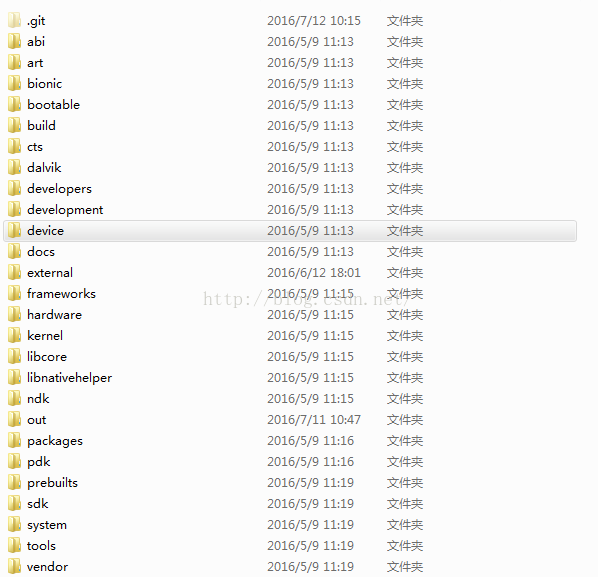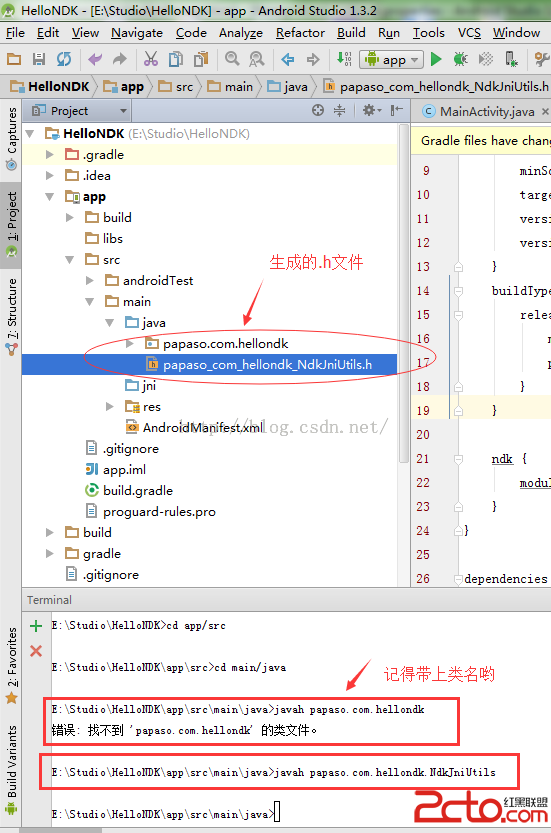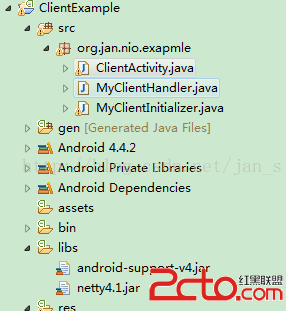編輯:關於Android編程
1. 使用藍牙的響應權限
[html]
<uses-permission android:name="android.permission.BLUETOOTH" />
<uses-permission android:name="android.permission.BLUETOOTH_ADMIN" />
<uses-permission android:name="android.permission.BLUETOOTH" />
<uses-permission android:name="android.permission.BLUETOOTH_ADMIN" />
2. 配置本機藍牙模塊
在這裡首先要了解對藍牙操作一個核心類BluetoothAdapter
[java]
BluetoothAdapter adapter = BluetoothAdapter.getDefaultAdapter();
//直接打開系統的藍牙設置面板
Intent intent = new Intent(BluetoothAdapter.ACTION_REQUEST_ENABLE);
startActivityForResult(intent, 0x1);
//直接打開藍牙
adapter.enable();
//關閉藍牙
adapter.disable();
//打開本機的藍牙發現功能(默認打開120秒,可以將時間最多延長至300秒)
discoverableIntent.putExtra(BluetoothAdapter.EXTRA_DISCOVERABLE_DURATION, 300);//設置持續時間(最多300秒)Intent discoveryIntent = new Intent(BluetoothAdapter.ACTION_REQUEST_DISCOVERABLE);
BluetoothAdapter adapter = BluetoothAdapter.getDefaultAdapter();
//直接打開系統的藍牙設置面板
Intent intent = new Intent(BluetoothAdapter.ACTION_REQUEST_ENABLE);
startActivityForResult(intent, 0x1);
//直接打開藍牙
adapter.enable();
//關閉藍牙
adapter.disable();
//打開本機的藍牙發現功能(默認打開120秒,可以將時間最多延長至300秒)
discoverableIntent.putExtra(BluetoothAdapter.EXTRA_DISCOVERABLE_DURATION, 300);//設置持續時間(最多300秒)Intent discoveryIntent = new Intent(BluetoothAdapter.ACTION_REQUEST_DISCOVERABLE);
3.搜索藍牙設備
使用BluetoothAdapter的startDiscovery()方法來搜索藍牙設備
startDiscovery()方法是一個異步方法,調用後會立即返回。該方法會進行對其他藍牙設備的搜索,該過程會持續12秒。該方法調用後,搜索過程實際上是在一個System Service中進行的,所以可以調用cancelDiscovery()方法來停止搜索(該方法可以在未執行discovery請求時調用)。
請求Discovery後,系統開始搜索藍牙設備,在這個過程中,系統會發送以下三個廣播:
ACTION_DISCOVERY_START:開始搜索
ACTION_DISCOVERY_FINISHED:搜索結束
ACTION_FOUND:找到設備,這個Intent中包含兩個extra fields:EXTRA_DEVICE和EXTRA_CLASS,分別包含BluetooDevice和BluetoothClass。
我們可以自己注冊相應的BroadcastReceiver來接收響應的廣播,以便實現某些功能
[java]
// 創建一個接收ACTION_FOUND廣播的BroadcastReceiver
private final BroadcastReceiver mReceiver = new BroadcastReceiver() {
public void onReceive(Context context, Intent intent) {
String action = intent.getAction();
// 發現設備
if (BluetoothDevice.ACTION_FOUND.equals(action)) {
// 從Intent中獲取設備對象
BluetoothDevice device = intent.getParcelableExtra(BluetoothDevice.EXTRA_DEVICE);
// 將設備名稱和地址放入array adapter,以便在ListView中顯示
mArrayAdapter.add(device.getName() + "\n" + device.getAddress());
}
}
};
// 注冊BroadcastReceiver
IntentFilter filter = new IntentFilter(BluetoothDevice.ACTION_FOUND);
registerReceiver(mReceiver, filter); // 不要忘了之後解除綁定
// 創建一個接收ACTION_FOUND廣播的BroadcastReceiver
private final BroadcastReceiver mReceiver = new BroadcastReceiver() {
public void onReceive(Context context, Intent intent) {
String action = intent.getAction();
// 發現設備
if (BluetoothDevice.ACTION_FOUND.equals(action)) {
// 從Intent中獲取設備對象
BluetoothDevice device = intent.getParcelableExtra(BluetoothDevice.EXTRA_DEVICE);
// 將設備名稱和地址放入array adapter,以便在ListView中顯示
mArrayAdapter.add(device.getName() + "\n" + device.getAddress());
}
}
};
// 注冊BroadcastReceiver
IntentFilter filter = new IntentFilter(BluetoothDevice.ACTION_FOUND);
registerReceiver(mReceiver, filter); // 不要忘了之後解除綁定
4. 藍牙Socket通信
如果打算建議兩個藍牙設備之間的連接,則必須實現服務器端與客戶端的機制。當兩個設備在同一個RFCOMM channel下分別擁有一個連接的BluetoothSocket,這兩個設備才可以說是建立了連接。
服務器設備與客戶端設備獲取BluetoothSocket的途徑是不同的。服務器設備是通過accepted一個incoming connection來獲取的,而客戶端設備則是通過打開一個到服務器的RFCOMM channel來獲取的。
服務器端的實現
通過調用BluetoothAdapter的listenUsingRfcommWithServiceRecord(String, UUID)方法來獲取BluetoothServerSocket(UUID用於客戶端與服務器端之間的配對)
調用BluetoothServerSocket的accept()方法監聽連接請求,如果收到請求,則返回一個BluetoothSocket實例(此方法為block方法,應置於新線程中)
如果不想在accept其他的連接,則調用BluetoothServerSocket的close()方法釋放資源(調用該方法後,之前獲得的BluetoothSocket實例並沒有close。但由於RFCOMM一個時刻只允許在一條channel中有一個連接,則一般在accept一個連接後,便close掉BluetoothServerSocket)
[java]
<SPAN style="BACKGROUND-COLOR: rgb(255,255,255)"><STRONG>private class AcceptThread extends Thread {
private final BluetoothServerSocket mmServerSocket;
public AcceptThread() {
// Use a temporary object that is later assigned to mmServerSocket,
// because mmServerSocket is final
BluetoothServerSocket tmp = null;
try {
// MY_UUID is the app's UUID string, also used by the client code
tmp = mBluetoothAdapter.listenUsingRfcommWithServiceRecord(NAME, MY_UUID);
} catch (IOException e) { }
mmServerSocket = tmp;
}
public void run() {
BluetoothSocket socket = null;
// Keep listening until exception occurs or a socket is returned
while (true) {
try {
socket = mmServerSocket.accept();
} catch (IOException e) {
break;
}
// If a connection was accepted
if (socket != null) {
// Do work to manage the connection (in a separate thread)
manageConnectedSocket(socket);
mmServerSocket.close();
break;
}
}
}
/** Will cancel the listening socket, and cause the thread to finish */
public void cancel() {
try {
mmServerSocket.close();
} catch (IOException e) { }
}
}</STRONG></SPAN>
private class AcceptThread extends Thread {
private final BluetoothServerSocket mmServerSocket;
public AcceptThread() {
// Use a temporary object that is later assigned to mmServerSocket,
// because mmServerSocket is final
BluetoothServerSocket tmp = null;
try {
// MY_UUID is the app's UUID string, also used by the client code
tmp = mBluetoothAdapter.listenUsingRfcommWithServiceRecord(NAME, MY_UUID);
} catch (IOException e) { }
mmServerSocket = tmp;
}
public void run() {
BluetoothSocket socket = null;
// Keep listening until exception occurs or a socket is returned
while (true) {
try {
socket = mmServerSocket.accept();
} catch (IOException e) {
break;
}
// If a connection was accepted
if (socket != null) {
// Do work to manage the connection (in a separate thread)
manageConnectedSocket(socket);
mmServerSocket.close();
break;
}
}
}
/** Will cancel the listening socket, and cause the thread to finish */
public void cancel() {
try {
mmServerSocket.close();
} catch (IOException e) { }
}
}
客戶端的實現
通過搜索得到服務器端的BluetoothService
調用BluetoothService的createRfcommSocketToServiceRecord(MY_UUID)方法獲取BluetoothSocket(該UUID應該同於服務器端的UUID)
調用BluetoothSocket的connect()方法(該方法為block方法),如果UUID同服務器端的UUID匹配,並且連接被服務器端accept,則connect()方法返回
注意:在調用connect()方法之前,應當確定當前沒有搜索設備,否則連接會變得非常慢並且容易失敗
[java]
SPAN style="BACKGROUND-COLOR: rgb(255,255,255)"><STRONG><strong> private class ConnectThread extends Thread {
private final BluetoothSocket mmSocket;
private final BluetoothDevice mmDevice;
public ConnectThread(BluetoothDevice device) {
// Use a temporary object that is later assigned to mmSocket,
// because mmSocket is final
BluetoothSocket tmp = null;
mmDevice = device;
// Get a BluetoothSocket to connect with the given BluetoothDevice
try {
// MY_UUID is the app's UUID string, also used by the server code
tmp = device.createRfcommSocketToServiceRecord(MY_UUID);
} catch (IOException e) { }
mmSocket = tmp;
}
public void run() {
// Cancel discovery because it will slow down the connection
mBluetoothAdapter.cancelDiscovery();
try {
// Connect the device through the socket. This will block
// until it succeeds or throws an exception
mmSocket.connect();
} catch (IOException connectException) {
// Unable to connect; close the socket and get out
try {
mmSocket.close();
} catch (IOException closeException) { }
return;
}
// Do work to manage the connection (in a separate thread)
manageConnectedSocket(mmSocket);
}
/** Will cancel an in-progress connection, and close the socket */
public void cancel() {
try {
mmSocket.close();
} catch (IOException e) { }
}
} </strong></STRONG></SPAN>
<strong> private class ConnectThread extends Thread {
private final BluetoothSocket mmSocket;
private final BluetoothDevice mmDevice;
public ConnectThread(BluetoothDevice device) {
// Use a temporary object that is later assigned to mmSocket,
// because mmSocket is final
BluetoothSocket tmp = null;
mmDevice = device;
// Get a BluetoothSocket to connect with the given BluetoothDevice
try {
// MY_UUID is the app's UUID string, also used by the server code
tmp = device.createRfcommSocketToServiceRecord(MY_UUID);
} catch (IOException e) { }
mmSocket = tmp;
}
public void run() {
// Cancel discovery because it will slow down the connection
mBluetoothAdapter.cancelDiscovery();
try {
// Connect the device through the socket. This will block
// until it succeeds or throws an exception
mmSocket.connect();
} catch (IOException connectException) {
// Unable to connect; close the socket and get out
try {
mmSocket.close();
} catch (IOException closeException) { }
return;
}
// Do work to manage the connection (in a separate thread)
manageConnectedSocket(mmSocket);
}
/** Will cancel an in-progress connection, and close the socket */
public void cancel() {
try {
mmSocket.close();
} catch (IOException e) { }
}
} </strong>
連接管理(數據通信)
分別通過BluetoothSocket的getInputStream()和getOutputStream()方法獲取InputStream和OutputStream
使用read(bytes[])和write(bytes[])方法分別進行讀寫操作
注意:read(bytes[])方法會一直block,知道從流中讀取到信息,而write(bytes[])方法並不是經常的block(比如在另一設備沒有及時read或者中間緩沖區已滿的情況下,write方法會block)
[java]
<SPAN style="BACKGROUND-COLOR: rgb(255,255,255)"><STRONG><strong> private class ConnectedThread extends Thread {
private final BluetoothSocket mmSocket;
private final InputStream mmInStream;
private final OutputStream mmOutStream;
public ConnectedThread(BluetoothSocket socket) {
mmSocket = socket;
InputStream tmpIn = null;
OutputStream tmpOut = null;
// Get the input and output streams, using temp objects because
// member streams are final
try {
tmpIn = socket.getInputStream();
tmpOut = socket.getOutputStream();
} catch (IOException e) { }
mmInStream = tmpIn;
mmOutStream = tmpOut;
}
public void run() {
byte[] buffer = new byte[1024]; // buffer store for the stream
int bytes; // bytes returned from read()
// Keep listening to the InputStream until an exception occurs
while (true) {
try {
// Read from the InputStream
bytes = mmInStream.read(buffer);
// Send the obtained bytes to the UI Activity
mHandler.obtainMessage(MESSAGE_READ, bytes, -1, buffer)
.sendToTarget();
} catch (IOException e) {
break;
}
}
}
/* Call this from the main Activity to send data to the remote device */
public void write(byte[] bytes) {
try {
mmOutStream.write(bytes);
} catch (IOException e) { }
}
/* Call this from the main Activity to shutdown the connection */
public void cancel() {
try {
mmSocket.close();
} catch (IOException e) { }
}
} </strong></STRONG></SPAN>
<strong> private class ConnectedThread extends Thread {
private final BluetoothSocket mmSocket;
private final InputStream mmInStream;
private final OutputStream mmOutStream;
public ConnectedThread(BluetoothSocket socket) {
mmSocket = socket;
InputStream tmpIn = null;
OutputStream tmpOut = null;
// Get the input and output streams, using temp objects because
// member streams are final
try {
tmpIn = socket.getInputStream();
tmpOut = socket.getOutputStream();
} catch (IOException e) { }
mmInStream = tmpIn;
mmOutStream = tmpOut;
}
public void run() {
byte[] buffer = new byte[1024]; // buffer store for the stream
int bytes; // bytes returned from read()
// Keep listening to the InputStream until an exception occurs
while (true) {
try {
// Read from the InputStream
bytes = mmInStream.read(buffer);
// Send the obtained bytes to the UI Activity
mHandler.obtainMessage(MESSAGE_READ, bytes, -1, buffer)
.sendToTarget();
} catch (IOException e) {
break;
}
}
}
/* Call this from the main Activity to send data to the remote device */
public void write(byte[] bytes) {
try {
mmOutStream.write(bytes);
} catch (IOException e) { }
}
/* Call this from the main Activity to shutdown the connection */
public void cancel() {
try {
mmSocket.close();
} catch (IOException e) { }
}
} </strong>
 Android 5.1.1 源碼目錄結構
Android 5.1.1 源碼目錄結構
最近公司培訓新同事,我負責整理一點關於android的基礎知識,遙想當年,剛接觸android,也是一頭霧水,啥都不懂,就是靠看文檔和視頻,對andro
 使用開源庫 MagicalRecord
使用開源庫 MagicalRecord
MagicalRecordhttps://github.com/magicalpanda/MagicalRecord注意: MagicalRecord 在 ARC 下運作
 在 Android Studio 中使用OpenCV所遇到問題
在 Android Studio 中使用OpenCV所遇到問題
Android Studio 中使用OpenCV所遇到問題 一、關於如何生成.h文件網上查了很多資料,大部分都是說需要切換到build/intermediate
 [Android初級]android與netty4初體驗
[Android初級]android與netty4初體驗
博主曾經對netty4的helloword很感興趣,也曾單純的寫過一個小小的聊天室java代碼,現在重新來看看,浏覽了這位牛人的博客 點擊去看看 我覺得受益匪淺,故拿來分